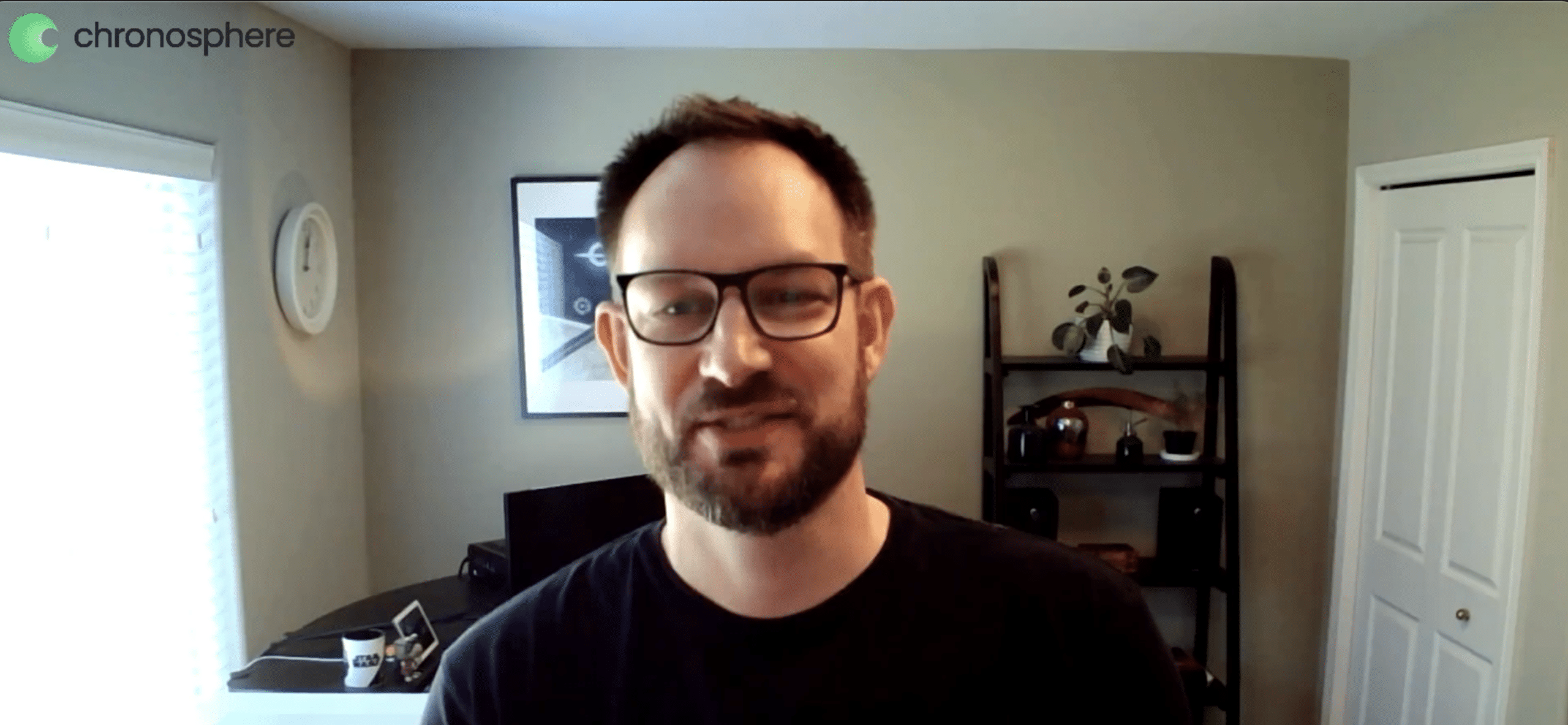Developer productivity has become a big topic of conversation as organizations navigate data sprawl and increased alert volume. Today, developers need more support than ever before to effectively troubleshoot and efficiently remediate problems before the customer notices.
In this second episode of our video series, Chronologues, we walk through three common developer productivity challenges teams face, how they affect your organization, and what you can do to increase overall efficiency.
If you don’t have time to watch the chat, read the full transcript below.
What does developer productivity mean?
Sophie Kohler: Developer productivity. It’s a term we’re hearing a lot today, but what does it actually mean to be productive? While in the olden days it was just about writing and shipping code, today it’s so much more than that. That’s why having a purpose-built solution that supports your engineers is crucial to developer productivity. When teams try to make do with observability solutions that are built for a pre-DevOps and pre-cloud native world, they will come across challenges, such as:
- An over reliance on a few hero developers or SREs.
- Lack of centralized visibility and contextual awareness in complex environments.
- And lastly, tools that don’t match mental models that reduce developer efficiency.
Engineer: Okay, the struggle is real. We know. Just tell us what we can do.
Sophie Kohler: Right, of course. Let’s talk about how they affect your organization and what you can do about it. Nate, can you help us out?

The over-reliance on hero developers
Nate Heinrich: The over-reliance on a few hero developers; let’s talk about that. Many of the customers I’ve talked to, and actually in my own experience over the last decade or so working with dev teams, have had this hero problem. It’s the idea that there’s these folks in the company — usually they’ve been there since the beginning or they simply have a ton of experience and they’re just able to hold large portions of the architecture in their head.
When something breaks or there isn’t an obvious fix, these heroes are interrupted to help mitigate the issue. This problem is only getting worse. It’s worse in a few ways, actually. And the first is complexity. In this cloud native world with more abstraction, more dynamically orchestrated components, more scaling, more complex logical flows to trace, it’s harder than ever to hold the whole of a modern system in one person’s head. And more on-call folks are leaning on these heroes for help in troubleshooting. Far from efficient, puts a lot of strain and pressure on everyone involved. Strain leads to burnout, burnout leads to attrition, and nobody wants that.
Offering a contextual user experience
Nate Heinrich: What can be done to help with this over-reliance on heroes? Well, it’s a great question. In a nutshell, we think it’s a simplified, highly-contextual user experience marked up by the organization’s power users and heroes, which both mirrors the complexity of the system, but is easy to navigate so developers can answer questions on their own. We’ve done just this recently with the addition of change event tracking, and its integration into the alert responders workflow.

Sophie Kohler: So, the solution would be democratized expertise and responsibility.
Now that we’ve ironed out our first common challenge that developers face today, let’s move on to the second: Fragmented visibility and response. Karl, take it away.
The challenge with decentralized platforms
Karl Kalash: In today’s cloud computing landscape, it’s tough to keep tabs on what’s going on without a centralized platform. Imagine this, you get an alert that something might be wrong, but instead of having a clear idea of what to tackle, you’re sent into a maze. And this mess usually ends up happening because many of the tools we use aren’t built to handle complex cloud native environments. They’re good for straightforward setups, but they end up falling short when things get complicated. And let’s face it, time spent digging through data is time not spent fixing the issue. This delay could be a disaster if you’re dealing with customer-facing incidents or losing revenue because your systems are down.
Sophie Kohler: He gets it. He definitely gets it.
Karl Kalash: What we really need is a tool that’s made for today’s complex systems: A platform that not only brings all your data together, but also makes sense of it. And more importantly, it should be user-friendly, and help developers quickly figure out what’s going on, so they can get things back on track.
One-stop observability shop
Karl Kalash: So, imagine a one-stop-shop designed specifically for complex cloud native environments. This platform takes everything — your app data, business metrics, infrastructure telemetry — and puts them all together in one place. [It] keeps the context, which is going to make it easier to understand what’s going on and how to respond effectively when issues come up.
Chronosphere does this like no one else by also giving you a correlated view across all types of data. You can effortlessly switch between metrics, traces, and events, all while keeping the context intact. And at the end of the day, that’s what we all want: A smooth running DevOps environment that helps keep both the team and the customers happy.

Misaligned tools that slow down developers
Sophie Kohler: I mean, happy developers and happy customers? What more could you want? Let’s cap off the developer productivity journey with our final battle: Misaligned tools that slow down overburdened developers. People of the world, let’s hear it for Lenesto.
Lenesto Page: Well, mom always told me don’t come to me with a problem without some semblance of a solution. You’re a DevOps engineer or developer and you’ve kind of been thrust into this world of containers, pods, all while maintaining code still. So many more responsibilities, yet so much control over the entire process that just historically wasn’t the case. What happens when the tools that you need don’t quite muster up?
These tools should help optimize the process, make things easier, but they often miss the mark. They present themselves as scattered pieces to an already complex puzzle. This misalignment often forces constant developer shifts, ultimately wasting time and resources. One possible solution is based around platform evolution.
Evolving the developer-user workflow
Lenesto Page: This means having a platform and tools that not only allow for view and management of services, but also ensure that that perspective is readily available without the added burden on the teams. At Chronosphere, we’re constantly adding features to evolve our platform, thus evolving this developer-user workflow. We give users the ability to really shape their data and shape their data costs with very easy product controls.

Learn more about how to support your developers
Sophie Kohler: Imagine a world where every developer feels invincible. Where routine tasks, like deployments, no longer feel nerve-wracking. And where your team can work confidently and excel in a cloud native world. Thanks for tuning in. Subscribe to our newsletter, The Observability Insider, to learn more tips and tricks in a cloud first world. Catch you next time!





